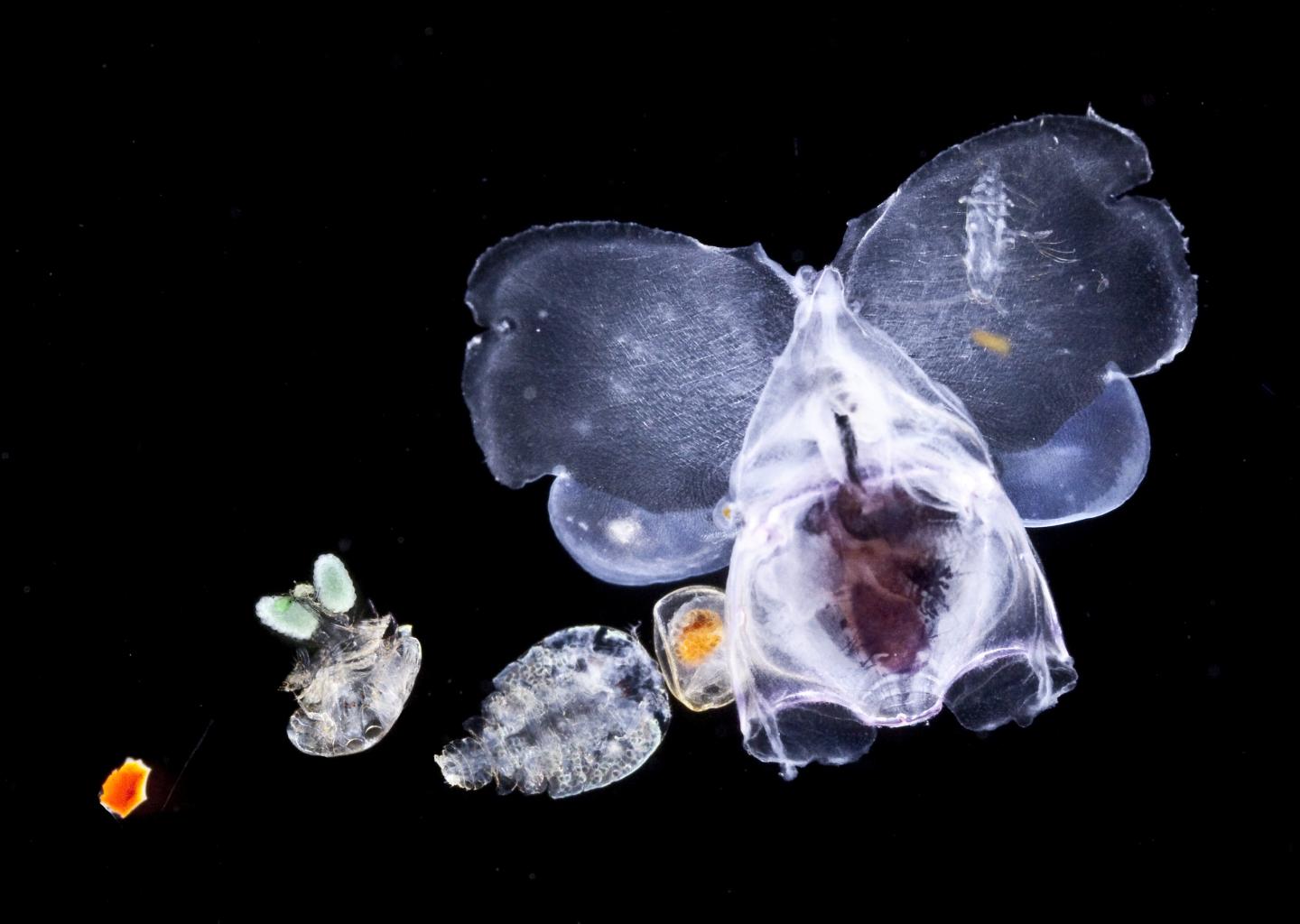
The Tara Oceans expedition collected these small zooplanktonic animals in the Indian Ocean: a molluscan pteropod on the right, and 2 crustacean copepods. On the left is a fragment of... In five related reports in this issue of the journal Science, a multinational team of researchers who spent three and a half years sampling the ocean's sunlit upper layers aboard the schooner Tara unveil the first officially reported global analyses of the Tara Oceans consortium. Planktonic life in the ocean is far more diverse than scientists knew, these reports show. They provide new resources for cataloguing the ocean's numerous planktonic organisms, which -- though critical to life on Earth, providing half the oxygen generated annually through photosynthesis, for example -- have largely been uncharacterized. The reports also reveal how planktonic life is distributed and how planktonic species interact, and they suggest that these organisms' interactions, more so than environmental conditions, help explain their community structures.
During expeditions from 2009 through 2013, the Tara Oceans scientists, an international consortium, sampled viruses, bacteria, protists, and small animals, ultimately collecting over 35,000 planktonic samples from 210 stations in all the major oceanic regions. Three reports in this package utilized subsets of this massive sample set to generate reference tools that shed light on the biodiversity of planktonic life in global oceans at an unprecedented scale. Shinichi Sunagawa and colleagues created an oceanic reference gene catalog comprising more than 40 million genes, most of which are novel -- a result that emphasizes the vast reservoir of uncharted genetic diversity in marine plankton communities. Ocean temperatures, Sunagawa et al. say, appear to be the main factor driving plankton community makeup, hinting that increasing water temperature will have a big impact on oceanic microbial life. Colomban de Vargas and colleagues created a catalogue of eukaryotic biodiversity among marine phytoplankton, estimating about 150,000 genetic types of eukaryotes, many more than described in the current literature. Jennfier Brum et al. developed an overview of how planktonic viruses are distributed in oceans worldwide. Gipsi Lima-Mendez and colleagues used all of these data sets to create a map of plankton species interactions, which have not previously been understood. Emilie Villar and colleagues also leveraged the data sets, integrating oceanographic and biological data into studies to understand how plankton distribution is impacted by environmental changes, like fast-moving ocean currents. In an Editorial in the issue, Marcia McNutt, Editor-in-Chief of Science, highlights the uncertainty around the impact of climate change on microscopic ocean life. Future analysis of the Tara Oceans data is likely to help address questions about how plankton will adapt to such changes. As E. Virginia Armbrust and Stephen R. Palumbi suggest in a related Perspective, the Tara Oceans Expedition "has generated a treasure trove of data available to anyone willing to dive in and start addressing [the] questions."
Source: American Association for the Advancement of Science
 Print Article
Print Article Mail to a Friend
Mail to a Friend
